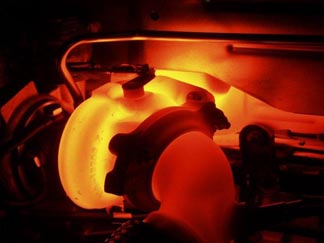
RB Racing has been turbocharging motorcycles since the late 1970's and like in any endeavor has come to the realization that the days of simple plumbing exercises, log manifolds, and carburetion are long since gone. Virtually everything we involves intercooling , water injection, electronic fuel injection, additional injector control and specialized engine components.




If you read the ubiquitous turbo books and study things till your eyes are blurry you will still choose the wrong turbo. The reason is simple...the people who write the books often have never been in the turbo business, and if they have they certainly have only made one or two iterrations of something similar to what you want to do, probably with some parts they had laying around. The earliest books by McGinnis (HP Books) are the best.


When we started making turbos for bikes we could never get any answers so we ended up buying 25 different turbos, each with different compressor and exhaust housings. Twenty five years ago this was maybe $6,500.00 whereas in today's prices it's more like $25,000.00 to $30,000.00 worth of turbos...just to see what happened. As was often the case you simply could not get what you wanted unless you bought two turbos, switched the housings and shafts and made a "hybrid". It was an expensive education then and it's even more so now.
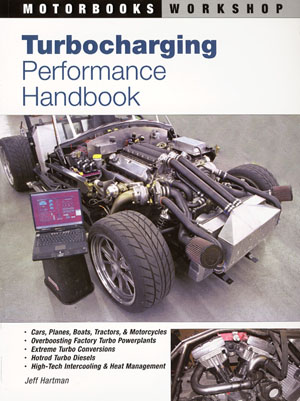
These days things are a lot better and with newer ball-bearing units, electronic fuel injection, intercooling and water injection. We can go faster with less drama albeit with higher costs. The one thing that hasn't changed is that many people who say they want a turbo shouldn't buy one because in today's "me me me now now now" world people just don't or won't accept responsibility for the consequences of doubling or tripling their horsepower.
Pictured above is Jeff Hartman's new book on turbocharger technology. It features Mike Geokan's Bonneville Harley engine on the cover.
Save the Drama fo ya Mama
A long time ago blown engines were a normal part of turbocharging things and broken pistons, split heads, broken rods and fried bearings were just part of the process. These days people think they can dance with the Devil and then go home to Mama. It still isn't going to happen.
For those of you who want to pay the price, like the ballerina with her bloody toes, or the actor who has faced 15 years of rejection, then the glory awaits you at the finish line. Colin Chapman once claimed that the ideal race car "should fall to bits the moment it crossed the finish line, otherwise it was over-engineered". A little careful engineering will keep your turbo project alive, but remember, you are dancing with the Devil...and it is glorious.
Understanding Compressor Maps
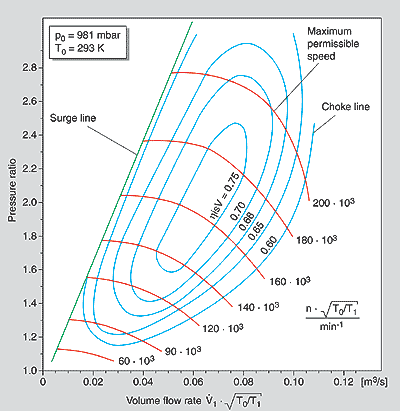
Operating characteristics: The compressor operating behaviour is generally defined by maps showing the relationship between pressure ratio and volume or mass flow rate. The useable section of the map relating to centrifugal compressors is limited by the surge and choke lines and the maximum permissible compressor speed.
Surge line:
The map width is limited on the left by the surge line. This is
basically "stalling" of the air flow at the compressor inlet. With too
small a volume flow and too high a pressure ratio, the flow can no
longer adhere to the suction side of the blades, with the result that
the discharge process is interrupted. The air flow through the
compressor is reversed until a stable pressure ratio with positive
volume flow rate is reached, the pressure builds up again and the cycle
repeats. This flow instability continues at a fixed frequency and the
resultant noise is known as "surging".
Choke line: The maximum centrifugal compressor volume flow rate is normally limited by the cross-section at the compressor inlet. When the flow at the wheel inlet reaches sonic velocity, no further flow rate increase is possible. The choke line can be recognised by the steeply descending speed lines at the right on the compressor map.
Turbo Calculator Horsepower and Airflow
Manufacturers and their Compressor Maps
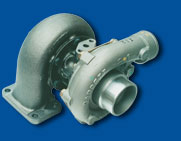 Download the newest Garrett Catalog
Download the newest Garrett Catalog| T3-40 | T3-45 | T3-50 | T3-60 | T3-Super 60 |
| T04B-60-1 | T04B-62-1 | T04B-H3 | T04B-S3 | T04B-V1/V2 | |
| T04E-40 | T04E-46 | T04E-50 | T04E-54 | T04E-57 | T04E-60 |
| T-61 | T-64 | T-66 | T-68-1 | T-70 | T-72 | T-76 |
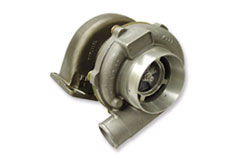
These are the newest of the Garrett series. Unlike some earlier "Ball-Bearing" turbos these have ceramic bearings on both exhaust and compressor side. Quicker spooling and more horsepower and better availability makes these a good choice as opposed to "custom" suppliers. There is wider distribution these days.
Here is a table of info on the GT series.
| GT12 Compr Turb | GT15 Compr Turb | GT20 Compr Turb | GT22 Compr Turb | GT25R Compr Turb |
| GT25R-40 Compr | GT28R Compr Turb | GT28RS Compr Turb | GT30R Compr Turb | GT30R-71 Compr Turb |
| GT32 Compr Turb | GT35 Compr Turb | GT35R Compr Turb | GT37 Compr Turb | GT40-50/54 Compr Turb |
| GT40-56 Compr | GT42 Compr Turb | GT60 Compr Turb |
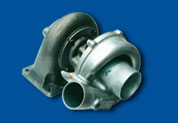
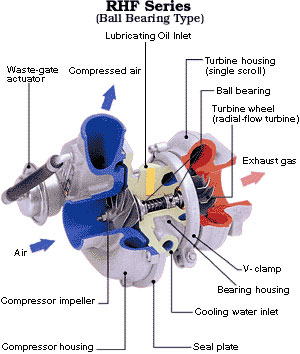
| Maps and Specs |
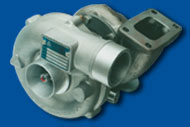
| TD04-09B | TD04-13G | TD04-15G | TD04H-18T |
| TD05-14B | TD05-14G | TD05-16G small wheel | TD05-16G large wheel |
| TD06-17C | TD06-20G | TD06-20G | |
| TS04 |
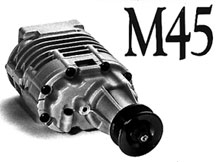
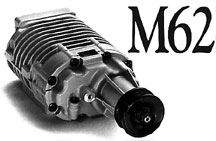

| M45 | Flow | Power consumption | Delta T |
| M62 | Flow | Power consumption | Delta T |
| M90 | Flow | Power consumption | Delta T |
| M112 | Flow | Power consumption | Delta T |
And a single Vortech map showing the S- and T-trim centrifugal superchargers.
| A-Trim Flow | S-Trim Flow | S-Trim V2 Flow | S- vs. T-trim Flow | YS-Trim Flow |
Marketed by various people and used on the new Ford GT